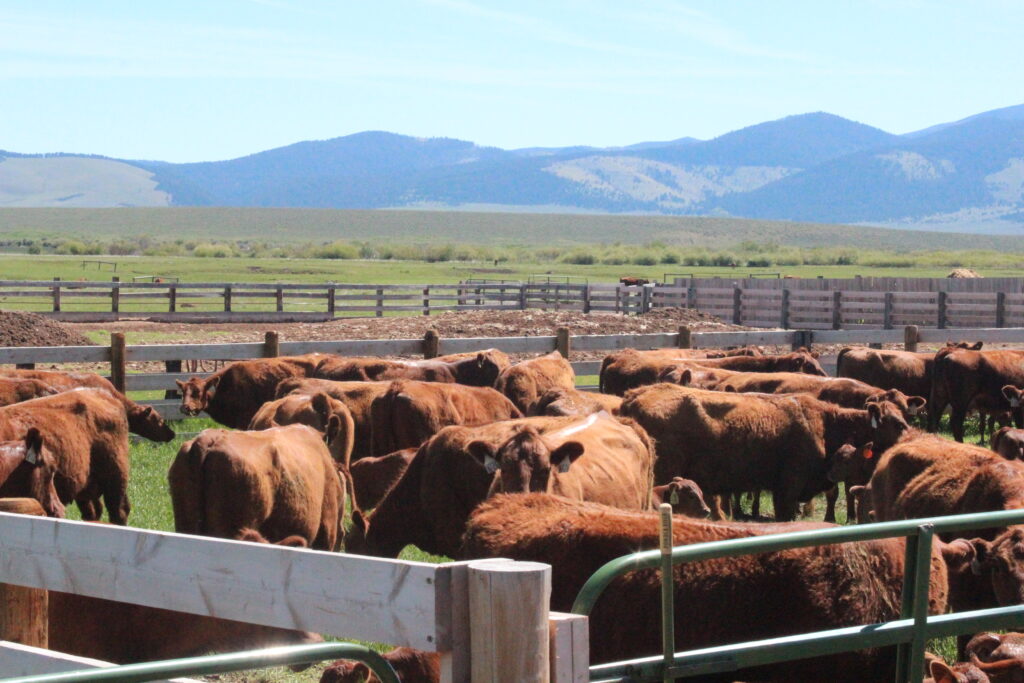This article originally appeared in the Washinton Post and is reprinted with permission from the author.
Holy moly, the fight over beef!
Forget the health part, although there’s plenty of fighting there, too. I’m looking at the environmental part. According to lots of climate people, beef is absolutely the worst thing for the planet. But to others, cattle can single-hoofedly reverse climate change.
What’s true?
Most of beef’s climate impact comes from two sources: the enteric methane cows produce when they eat, and the deforestation happening to accommodate increasing global demand for beef. Each kilogram of beef (about 2.2 pounds) adds the equivalent of nearly 100 kilograms of CO2 (about 220 pounds) into the atmosphere. Just under a quarter of those 100 kilos is due to the land-use changes, and slightly over half is due to on-farm emissions, which include enteric methane and greenhouse gases from equipment, manure and fertilizer.
That makes beef’s footprint (by weight) more than 10 times that of chicken and 200 times that of potatoes. Which is why, in climate circles, it’s Dietary Enemy No. 1.
But there’s an important part of the calculation that those numbers leave out. In some systems, grazing cattle can sequester carbon in soils, and that carbon can offset some of the other emissions. Absolutely nobody disagrees that this happens, but absolutely everybody disagrees about the crucial part: Just how much carbon can be sequestered?
To figure out whether beef is a plus or a minus, you have to wade into the weeds (and grasses, and forbs) on how, and how much, cattle can change soils.
To do that, I enlisted the help of Paige Stanley. She’s doing postdoctoral research at Colorado State University on how grazing affects soil, but she’s also a patient, evidence-based, totally reasonable voice on social media, where this conversation can get — let’s call it “heated.” She’s also a co-author of papers on some of the most rigorous experiments involving cattle and carbon.
First, I asked her to explain how cows can sequester carbon and generally improve soils.
For starters, cows eat some of the plants and deposit manure, a high-quality fertilizer. By eating those plants, she explains, they encourage competition, which promotes biodiversity and can prevent encroachment by invasive species. In the absence of grazing, plants move more quickly from their vegetative stage (after germination), where most of the growth happens, to flowering, after which they “lignify,” or turn brown and eventually die. Cattle keep plants greener longer, which encourages more root growth.
So far so good, but the crux of the biscuit is how much carbon they can sequester. Enough to make beef carbon-neutral?
“I have a hard time talking to people about carbon-neutral beef because that’s five steps ahead of where we are,” Stanley says. “There’s not been a single study to say that we can have carbon-neutral beef.”
There have, however, been papers modeling and hypothesizing about just how much carbon cattle can sequester. But I’m an empiricist, and models have an annoying tendency to reflect the beliefs of the modelers. Let’s go to the videotape and look at the results when people like Stanley actually measure soil carbon, which she did in the most compelling study I’ve seen on this issue. She and her co-authors used a technique called “adaptive multi-paddock grazing,” in which the animals are moved around to mimic the movement of wild ruminants, and found that the carbon sequestered by the steers did indeed outweigh the carbon emitted by their manure and digestion.
Stanley cautions that this is only in the finishing stage, and, of course, this is an experimental and not a production system, but still. And she says other researchers have reported similar amounts of sequestered carbon, about 1½ metric tons (about 3,310 pounds) per acre, with grazing.
That’s a lot of carbon. But there are some other considerations.
For starters, there’s land use. The grazed animals in Michigan required more than twice as much land as the feedlot-finished animals. If we’re going to feed the world without deforesting it, we need to do so on the 50 percent of habitable land that’s already used for agriculture. Any system that requires twice as much land means we have to appropriate more land for agriculture somewhere else. Deforesting can outweigh the carbon gains of grazing, and that’s a cost that isn’t factored into the equation in most of these studies.
Stanley notes that there’s not a lot of research on how shifting some production to grass would affect land use in other places, and it’s hard to predict that relationship. And she’s right. But I think we have to make the effort, because land use is the fly in the carbon-neutral beef ointment.
It’s not the only fly. There’s also opportunity cost. What would happen to that land if it wasn’t grazed? If it was previously used for crops, where do those crops go? And if it was being grazed at a heavier stocking density, how do you make up for the beef you’re not growing?
It’s also important to note that not all experiments are seeing the kind of sequestration rates achieved by the Michigan study. A grazing experiment at White Oak Pastures, in Georgia, found that sequestered carbon could reduce the carbon footprint of beef by two-thirds. Former presidential candidate Tom Steyer has been doing regenerative grazing on his California cattle ranch since 2011 and getting great results in terms of biodiversity and water infiltration, but carbon stocks haven’t increased. And, of course, there are lots of kinds of grazing, and sometimes the type (stocking density, rotation style) affects soil carbon. Sometimes, it doesn’t seem to. There are almost always benefits to grazing, but it’s hard to weigh things like biodiversity against carbon sequestration.
We also have to ask how much of the sequestered carbon in these systems is actually due to the cattle. What would happen to the land if it were simply left fallow?
The answer is, depending on the land, and on the kind of grazing, it might sequester even more carbon. In studies of grazed vs. ungrazed land, soil carbon stocks sometimes increase. Sometimes, they’re very similar: A study of areas in the Great Plains found that sites that hadn’t been grazed in 74 years had soil carbon stocks similar to comparable sites that had been. In a study done in Texas, the ungrazed plot was, by many measurements, healthier than any of the three grazing conditions.
Where does that leave us? Carbon-neutral beef is absolutely a theoretical possibility. But for it to work, it would have to:
- Be based on measured, not modeled, carbon sequestration.
- Take into account any food production that was displaced by grazing.
- Take land-use change, including deforestation, into account.
- Count only the carbon that cattle sequester beyond what no grazing sequesters.
I would love to have carbon-neutral beef, from cattle grazing in environments they actually benefit. But we have to be clear: We’re not there yet. And genuine carbon neutrality means including factors that most studies don’t yet. But ranchers and scientists are working on it, and I believe the needle will mooooooove.
Sorry.



High quality websites are expensive to run. If you help us, we’ll pay you back bigtime with an ad-free experience and a lot of freebies!
Millions come to AmazingRibs.com every month for high quality tested recipes, tips on technique, science, mythbusting, product reviews, and inspiration. But it is expensive to run a website with more than 2,000 pages and we don’t have a big corporate partner to subsidize us.
Our most important source of sustenance is people who join our Pitmaster Club. But please don’t think of it as a donation. Members get MANY great benefits. We block all third-party ads, we give members free ebooks, magazines, interviews, webinars, more recipes, a monthly sweepstakes with prizes worth up to $2,000, discounts on products, and best of all a community of like-minded cooks free of flame wars. Click below to see all the benefits, take a free 30 day trial, and help keep this site alive.
Post comments and questions below
1) Please try the search box at the top of every page before you ask for help.
2) Try to post your question to the appropriate page.
3) Tell us everything we need to know to help such as the type of cooker and thermometer. Dial thermometers are often off by as much as 50°F so if you are not using a good digital thermometer we probably can’t help you with time and temp questions. Please read this article about thermometers.
4) If you are a member of the Pitmaster Club, your comments login is probably different.
5) Posts with links in them may not appear immediately.
Moderators